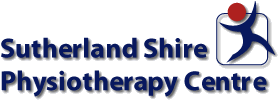Treatment
If you have a simple blocked duct that you can clear quickly, you should be feeling better within a few hours. If you are not improving or if you have signs of an infection (fever and feeling unwell) you should see your doctor immediately. If you have an infection you will be prescribed antibiotics. This is quite safe for the baby. Make sure you complete the course of antibiotics, as this is essential to ensure the infection is completely gone.
Physiotherapy treatment includes
- Ultrasound which is very effective in clearing the blockage in the ducts and helps to reduce the inflammation, swelling and pain associated with mastitis.
- Gentle lymphatic drainage to promote circulation and milk flow.
- Advice on feeding, positioning and breast care to help recovery and help prevent recurrence.
Treatment is usually only needed for a few days.
Self Help
- Start treatment as soon as you become aware of a lump or a sore spot in your breast.
- Keep breast feeding your baby. If you plan to stop breast feeding wait until the mastitis has completely cleared. Your baby's sucking will help to clear the blockage. Your milk is quite safe for your baby to drink.
- Make sure you are relaxed and comfortable and your baby is well supported before you begin a feed.
- Start feeds on the affected side. However, make sure your other breast is not becoming too full.
- Try to have the baby's chin positioned over the blockage.
- Gently massage the affected area, stroking towards your nipple during feeds.
- If your baby is not emptying the breast or not wanting to feed from the affected side then try expressing.
- Use hot packs, but only sparingly. Use for few minutes before a feed. This will help the let-down and help reduce the pain.
- Use cold packs after a feed.
- Loosen or take off your bra and wear loose fitting clothing.
- Get plenty of rest and drink lots of water.
Prevention
- Alternate the breast that you start the feed from. This ensures that one side is fully emptied at each feed.
- Vary your feeding position.
- Make sure that both you and your baby are comfortable and relaxed during feeds and that your baby is attaching well.
- Avoid missing feeds. If your breasts are feeling full and your baby doesn't want to feed, express a small amount until you're comfortable.
- Wear loose fitting clothing and if you are wearing a bra, make sure it fits well.
- Check your breasts regularly for lumps, tenderness and redness and if you notice any signs of a blockage try to clear it quickly.
- Avoid the use of nipple creams as these can harbour bacteria. Instead try massaging sore nipples with a little breast milk.
- Wash your hands before feeds and after nappy changes.
- Be kind to yourself. Get plenty of rest, drink lots of water, eat well and try to minimise stress.
Physiotherapy is very effective in reducing the pain and symptoms of mastitis and speeding your recovery. Call us to schedule an appointment with Heather or Gillian. Our staff are mature, caring women who will make you feel welcome and comfortable in our practice. You will be treated with the utmost respect for your dignity and privacy. If you are unsure if we can help you, please feel free to ring us first to discuss your needs.
Telephone counselling is available 24 hours a day from the National Australian Breastfeeding Association Helpline on 1800 686 268 for advice on mastitis and other breast feeding issues.
Last updated: 1st August, 2020
Photo courtesy of Papaija2008 from FreeDigitalPhotos.net
Please note that the above information is of a general nature and is not intended to substitute for professional advice. You should always seek the advice of your qualified health practitioner to attain a proper diagnosis before starting any treatment regime.
[Return to Top] |
